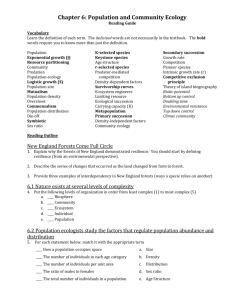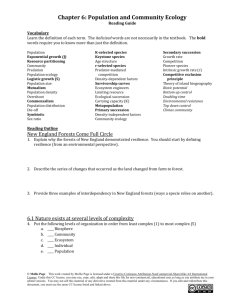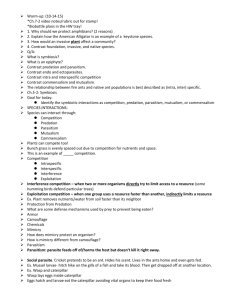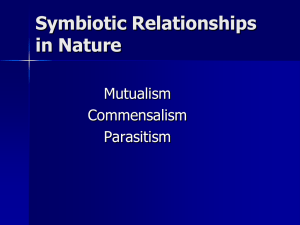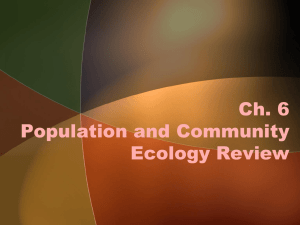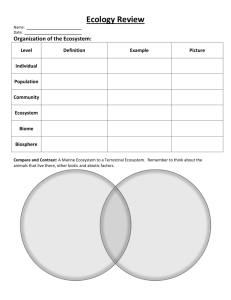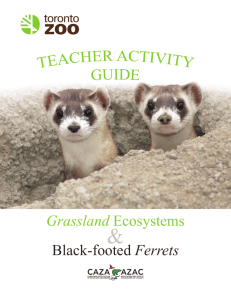AP Chapter 6 - Madeira City Schools
advertisement
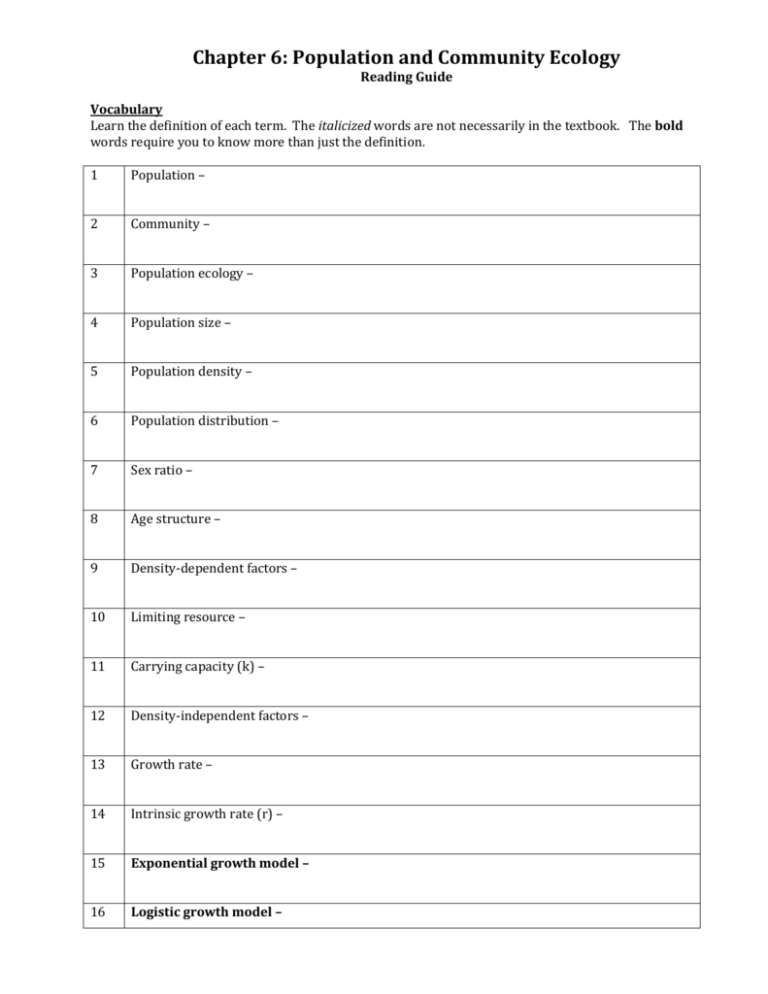
Chapter 6: Population and Community Ecology Reading Guide Vocabulary Learn the definition of each term. The italicized words are not necessarily in the textbook. The bold words require you to know more than just the definition. 1 Population – 2 Community – 3 Population ecology – 4 Population size – 5 Population density – 6 Population distribution – 7 Sex ratio – 8 Age structure – 9 Density-dependent factors – 10 Limiting resource – 11 Carrying capacity (k) – 12 Density-independent factors – 13 Growth rate – 14 Intrinsic growth rate (r) – 15 Exponential growth model – 16 Logistic growth model – 17 Overshoot – 18 Die-off – 19 k-selected species – 20 r-selected species – 21 Survivorship curves – 22 Corridors – 23 Metapopulations – 24 Community ecology – 25 Competition – 26 Competitive exclusion principle – 27 Resource partitioning – 28 Predation – 29 True predators – 30 Herbivores – 31 Parasites – 32 Parasitoids – 33 Mutualism – 34 Commensalism – 35 Symbiotic relationship – 36 Keystone species – 37 Predator-mediated competition – 38 Ecosystem engineers – 39 Ecological succession – 40 Primary succession – 41 Secondary succession – 42 Pioneer species – 43 Theory of island biogeography – New England Forests Come Full Circle 1. Explain why the forests of New England demonstrated resilience. You should start by defining resilience (from an environmental perspective). 2. Describe the series of changes that occurred as the land changed from farm to forest. 3. Provide three examples of interdependency in New England forests (ways a specie relies on another) 6.1 Nature exists at several levels of complexity 4. Put the following levels of organization in order from least complex (1) to most complex (5) a. ____ Biosphere b. ____ Community c. ____ Ecosystem d. ____ Individual e. ____ Population 6.2 Population ecologists study the factors that regulate population abundance and distribution 5. For each statement below, match it with the appropriate term ____ How a population occupies space a. Size ____ The number of individuals in each age category b. Density ____ The number of individuals per unit area c. Distribution ____ The ratio of males to females d. Sex ratio ____ The total number of individuals in a population e. Age Structure 6. Label the following pictures as random, uniform or clumped distribution. 7. Label the following as density dependent (DD) or density independent (DI) factors a. ______ A tornado e. ______ Drought b. ______ Amount of food available f. c. ______ Availability of water g. ______ Predation d. ______ Climate change h. ______ Spread of disease ______ Freezing temperatures 6.3 Growth models help ecologists understand population changes 8. Fill in the following chart (careful – mine is organized differently than the book) Trait r-selected K-selected Level of parental care Life Span Number of offspring Number of reproductive events Population dynamics Population growth rate Population regulation Size of offspring Time to reproductive maturity 9. Fill in the following chart on survivorship curves Survivorship Curve Description Example species Type I Type II Type III 6.4 Community ecologists study species interactions 10. What is the difference between competitive exclusion and resource partitioning? Which one is likely to be associated with a full niche overlap? A partial niche overlap? 11. Give an example of each type of resource partitioning a. Temporal – b. Spatial – c. Morphological - 12. Fill in the following chart for species relationships Relationship Commensalism Competition Herbivores Keystone Specie Mutualism Parasites Parasitoids True predators Description Specific Example +/+, +/-, +/0 13. Competition Identify each of the following as an example of the competitive exclusion principle, temporal resource partitioning, spatial resource partitioning or morphological resource partitioning: i. Several species of Warbler Birds hunt insects in the same types of trees, but each feeds in a different part of the tree ii. When wolves were absent from Yosemite, deer grazed many plant species so heavily that other herbivore species were unable to establish themselves iii. Many different species of bats use a single watering hole, but each at different times iv. Different species of butterfly have tongues of varying lengths, each specialized to the shape of the flowers produced by the plants it feeds on v. Invasive species that out-compete native species for key resources often drive the native species to extinction 14. Predation List 2 distinguishing characteristics of each type of predation: Characteristic 1 True predators Herbivores Parasites Parasitoids Characteristic 2 15. Mutualism a. Under what conditions would natural selection favor mutualism between two species? b. True/false: In a mutualistic relationship, neither species evolves traits suited to helping the other c. Which of the following are mutualistic: (Lichens) (Viruses) (Coral) (Acacia trees) (African lions) 16. Commensalism a. True/false: In commensalism, both species benefit 17. Keystone Species a. How could an ecologist identify a keystone species in any given ecosystem? b. Why are sea stars and beavers considered to be keystone species in their habitats? 6.5 The composition of a community changes of time 18. What is the main difference between primary and secondary succession? 6.6 The species richness of a community is influenced by many factors 19. What happens to the level of biodiversity as a. You move from the poles to the equator? b. A habitat gets older? c. A habitat gets smaller? d. The more separated a habitat is? WTS – Bringing Back the Black-Footed Ferret 20. Describe the role of prairie dogs in the grassland ecosystem. Why did ranchers not like them? 21. Describe the role of the black-footed ferret in the grassland ecosystem? Why did their populations decline? 22. What kind of specie is the black-footed ferret (K or r) and how did this impact its recovery? 23. List some of the actions taken to help the ferret population recover.
